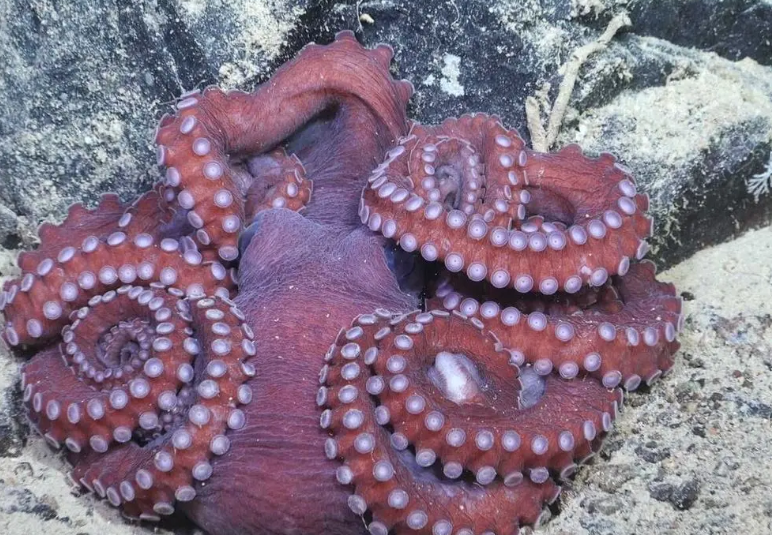Following the detachment of an iceberg in Antarctica, a team of researchers explored the marine creatures hidden beneath the icy continent. Their images reveal an ecosystem established there for decades.
Antarctica, as we usually imagine it, is far from being a continent favorable to life. But with the recent breakup of the gigantic iceberg A-84, measuring 29 kilometers long by 16 kilometers wide, the scientific community has the opportunity to study up close a breathtaking underwater ecosystem that had until now been hidden beneath the ice.
Creatures Hidden Beneath Antarctica
This discovery dates back to January 13, 2025, when A-84 detached from the George VI Ice Shelf. The newborn iceberg was then about twelve days away from the Falkor, the research vessel of the Schmidt Ocean Institute. The team of scientists immediately headed toward A-84, hoping to observe the new iceberg closely — but what they found exceeded all expectations.
Upon arrival, the team deployed SuBastian, a remotely operated underwater vehicle (ROV), to explore the seabed over eight days. Diving as deep as 1,300 meters below sea level, SuBastian revealed a collection of species living in waters until now covered by the iceberg: octopuses, giant spider crabs, fish, as well as sponges and corals.
Species Established for Several Decades
“We did not expect to find such a beautiful and flourishing ecosystem,” said Patricia Esquete, marine biologist and co-leader of the expedition, in a statement:
“Based on the size of the animals, the communities we observed have been there for decades, if not hundreds of years.”
Among the clues allowing scientists to estimate the ecosystem’s age is the presence of several large sponges, a species that grows very slowly — sometimes less than two centimeters per year — indicating a long-established animal community beneath the iceberg.
The confirmation of life beneath Antarctic ice dates back to a 2021 expedition at the Filchner-Ronne Ice Shelf. However, the Falkor expedition marks a historic step in exploring the region’s seabed, unveiling with unprecedented detail the rich biodiversity present beneath the White Continent.



